2018 Toyota Tacoma 4×4 TRD Sport Review - Man About Town

2018 Toyota Tacoma 4X4 TRD Sport
Spend a little time in the gentrified corners of your fair city, and in between all the Audi Q5s and Subaru Outbacks jockeying for spots outside the artisan cupcake shoppe, you’ll spy a right-sized pickup that doesn’t conjure up images of dreaded rural riff-raff. It’s the model that can’t help but post sales increases with each passing month, and it doesn’t come in an opulent western/ranch-themed trim.
Now, aside from a low-range uphill excursion in an old college buddy’s extended cab 4×4 in Nova Scotia, my impression of the Toyota Tacoma was — perhaps unfairly — that it, like the protagonist in the Glenn Frey song, was something that belonged to the city. It’s hard not to notice its popularity with the type of urbanite who probably jogs, but only on weekends. And only with a female companion.
With these shallow stereotypes in mind, I accepted the keys to what seemed to be the most urban-friendly Tacoma in existence: the 4×4 Double Cab V6 TRD Sport model. What would I become after a week behind the wheel?
A man, that’s what. (No angry letters, please.)
No, I didn’t become any less sedentary, nor did my sparse moustache gain newfound bushiness. But the Tacoma’s rugged, old-school trappings — part-time four-wheel drive, less-than-nimble steering, and diamond-soft suspension — made memories of coddling crossovers and ultra-lux full-size pickups stand in stark contrast. If you’re too soft for this ride, don’t line up. There’s others who will.
Granted, the road-focused TRD Sport dials its suspension to the firmest of settings, ensuring moments of jarring rear-end bounce whenever potholes and shattered pavement lurk. This tester’s Upgrade Package placed 17-inch rubber where one would have seen 16-inch donuts, helping nothing, but not hindering much, either. Certainly, opting for the TRD Pro or TRD Off-Road (or going cheap and entry-level) would have softened up the Tacoma’s legs a bit. Couple this jostling with decidedly un-car-like steering, a tall perch (my knees were about seven inches below the window sill at any given time), and seats hard enough to double as a writing desk, and one quickly realizes how weak we’ve become.
How spoiled we are by sonombulent two-and three-row appliances that drive like a Camry. WWII wasn’t fought with cushy dampers.
Not that the TRD Sport didn’t try to put on airs. No, there was a wholly unnecessary moonroof in this loaded tester, but blame rests solely on the aforementioned package. OEMs don’t make a habit of saturating their media fleets with bargain basement trims, so this Tacoma arrived ready to satisfy the man who isn’t willing to compromise on creature comforts in the presence of leaf springs.
Features that serve as the bare minimum level of content in similarly priced five-person family haulers all showed up here — things like push-button ignition, a suite of driver assist functions, and dual zone automatic climate control. Gripes showed up, too. Like the fact this model’s Toyota Safety Sense suite doesn’t offer a lane-hold feature, just a barely audible (or visible) lane-departure warning. A bit of assist was something this highway wanderer could have made use of. Given my tall frame, a steering wheel that reached closer to my rearward seating position would have helped, too.
Despite scouring the infotainment menu (accessible via a 7-inch touchscreen) and the various dash buttons, I couldn’t manage to boost the gauge cluster brightness, which remained unusually dim. Speaking of the touchscreen, Toyota’s simple-to-use but dated infotainment system places the station list within millimeters of the volume knob when the Entune audio is set to radio. Inevitably, cranking the volume meant accidentally swapping manly hard rock for teeny bopper pop or a French-language newscast. But hey, there’s a wireless charging pad, so that’s a plus.
Unfortunately, I can’t tell you how many oddly-shaped pieces of junk I was able to fit, Tetris-style, in the Tacoma’s 6.1-foot long box, or whether the bed rail cleats made smuggling soiled mattresses to the dump a breeze. The only thing this urban adventurer hauled during its week-long test was my own sorry ass and two flame-broiled Whoppers (with a medium drink). Not even a trip to IKEA for funny-sounding jams!
Of course, few trucks ever achieve their maximum potential. Most Tacomas spend their days in search of a speedier commute home and cheaper groceries, and rare is the truck whose owner ever selects “4L” on the transfer case dial. With a softer suspension, I imagine this double cab would very much excel in those mundane roles. Rear seat leg and headroom proved acceptable even for my gangly frame, and 278 horsepower and 265 lb-ft of torque doesn’t leave you struggling to get up to speed. You’ll just need to dig deep into that stiff accelerator pedal to find it.
To put it bluntly, the Tacoma’s only real problem is that it feels old. Solid as a rock, to be sure, but unrefined. Engine roar and associated vibration rides shotgun for much of the trip, the rear wheels enjoy drum binders, and steering effort at low speeds is surprisingly heavy. Course corrections give the feeling that the hood is actually a bow (love that scoop, though). It’s a truck that feels like a truck and isn’t afraid of making its owner work. And some would have it no other way.
These observations troubled me, frankly. Here I was, living in a city and bitching about ride quality and NVH in a revered small pickup. It wouldn’t be fair to return the truck and write up a review from an apartment that’s within half a mile of a Starbucks and yoga studio. Trucks are tools, after all, and the Tacoma is renowned for enjoying its romps in the dirt.
What if I actually needed this thing for rough stuff?
With this question in mind, I took a detour on the way back to the dealer; out to the sticks, where a hazy memory pointed me towards a “Proceed At Own Risk” sign standing sentry at the terminus of a dirt roadway. Past experience told me the roughly half-mile long section of “road” between two cul-de-sacs was a magnet for Jeep Wranglers and other off-roaders, as it filled the trough of a valley between two higher, parallel roads. Farm fields lay on either slope, but this half-mile stretch housed nothing but ticks, mosquitoes, swampy forest, and mud holes of undetermined depth.
Halfway down the road’s increasingly soupy length, I realized that tackling the course in this direction meant forgoing the option of chickening out and turning back. It’s better to ease into things, I guess. Further beyond the hood the holes grew in size, spanning the road’s width (and beyond), with the distance between them shrinking with each body of brown ooze. A lake greater than all the rest stood between the shell holes and the cul-de-sac on the other side.
Unhelpfully, it was around that moment I remembered the TRD Sport doesn’t boast skid plates, nor a locking differential or multi-terrain mode. Tire tread? Not nearly as chunky as its beefier TRD brethren. Oh well, as Sean Connery said in The Untouchables, God hates a coward. So 4H and a careful throttle it was. And so I made it out the other end — tense, in need of two car washes, but genuinely satisfied that this urban Tacoma would meet my commuting needs during the Apocalypse.
Isn’t that what every truck owner wants?
[Images: Steph Willems/TTAC]

More by Steph Willems
Latest Car Reviews
Read moreLatest Product Reviews
Read moreRecent Comments
- Jalop1991 In a manner similar to PHEV being the correct answer, I declare RPVs to be the correct answer here.We're doing it with certain aircraft; why not with cars on the ground, using hardware and tools like Telsa's "FSD" or GM's "SuperCruise" as the base?Take the local Uber driver out of the car, and put him in a professional centralized environment from where he drives me around. The system and the individual car can have awareness as well as gates, but he's responsible for the driving.Put the tech into my car, and let me buy it as needed. I need someone else to drive me home; hit the button and voila, I've hired a driver for the moment. I don't want to drive 11 hours to my vacation spot; hire the remote pilot for that. When I get there, I have my car and he's still at his normal location, piloting cars for other people.The system would allow for driver rest period, like what's required for truckers, so I might end up with multiple people driving me to the coast. I don't care. And they don't have to be physically with me, therefore they can be way cheaper.Charge taxi-type per-mile rates. For long drives, offer per-trip rates. Offer subscriptions, including miles/hours. Whatever.(And for grins, dress the remote pilots all as Johnnie.)Start this out with big rigs. Take the trucker away from the long haul driving, and let him be there for emergencies and the short haul parts of the trip.And in a manner similar to PHEVs being discredited, I fully expect to be razzed for this brilliant idea (not unlike how Alan Kay wasn't recognized until many many years later for his Dynabook vision).
- B-BodyBuick84 Not afraid of AV's as I highly doubt they will ever be %100 viable for our roads. Stop-and-go downtown city or rush hour highway traffic? I can see that, but otherwise there's simply too many variables. Bad weather conditions, faded road lines or markings, reflective surfaces with glare, etc. There's also the issue of cultural norms. About a decade ago there was actually an online test called 'The Morality Machine' one could do online where you were in control of an AV and choose what action to take when a crash was inevitable. I think something like 2.5 million people across the world participated? For example, do you hit and most likely kill the elderly couple strolling across the crosswalk or crash the vehicle into a cement barrier and almost certainly cause the death of the vehicle occupants? What if it's a parent and child? In N. America 98% of people choose to hit the elderly couple and save themselves while in Asia, the exact opposite happened where 98% choose to hit the parent and child. Why? Cultural differences. Asia puts a lot of emphasis on respecting their elderly while N. America has a culture of 'save/ protect the children'. Are these AV's going to respect that culture? Is a VW Jetta or Buick Envision AV going to have different programming depending on whether it's sold in Canada or Taiwan? how's that going to effect legislation and legal battles when a crash inevitibly does happen? These are the true barriers to mass AV adoption, and in the 10 years since that test came out, there has been zero answers or progress on this matter. So no, I'm not afraid of AV's simply because with the exception of a few specific situations, most avenues are going to prove to be a dead-end for automakers.
- Mike Bradley Autonomous cars were developed in Silicon Valley. For new products there, the standard business plan is to put a barely-functioning product on the market right away and wait for the early-adopter customers to find the flaws. That's exactly what's happened. Detroit's plan is pretty much the opposite, but Detroit isn't developing this product. That's why dealers, for instance, haven't been trained in the cars.
- Dartman https://apnews.com/article/artificial-intelligence-fighter-jets-air-force-6a1100c96a73ca9b7f41cbd6a2753fdaAutonomous/Ai is here now. The question is implementation and acceptance.
- FreedMike If Dodge were smart - and I don't think they are - they'd spend their money refreshing and reworking the Durango (which I think is entering model year 3,221), versus going down the same "stuff 'em full of motor and give 'em cool new paint options" path. That's the approach they used with the Charger and Challenger, and both those models are dead. The Durango is still a strong product in a strong market; why not keep it fresher?



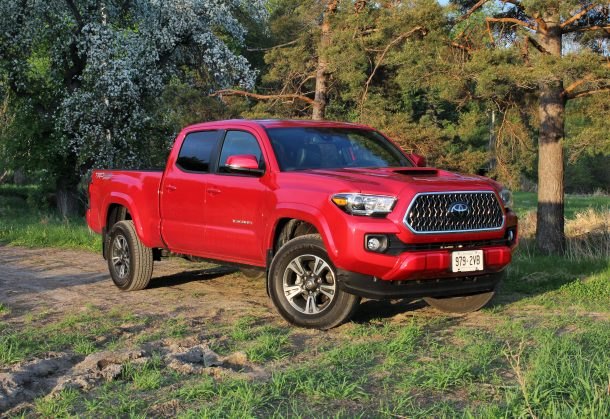



















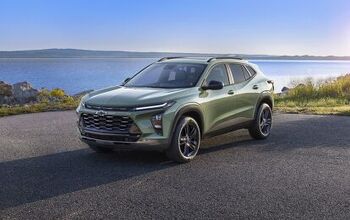
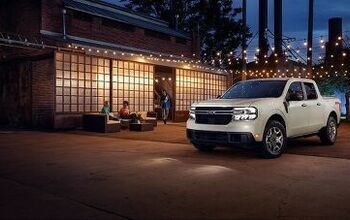

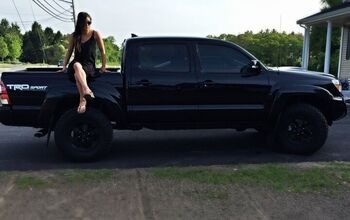
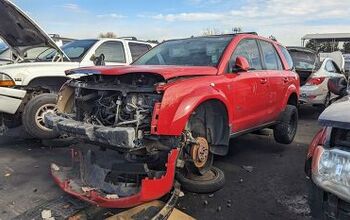

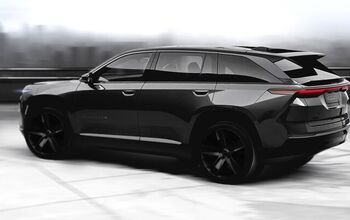
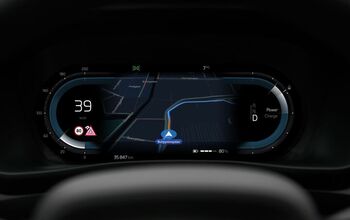
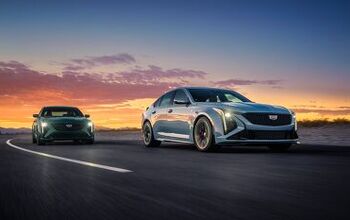
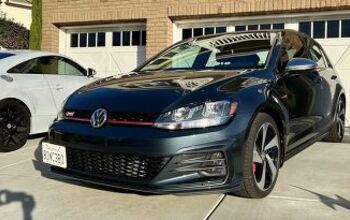
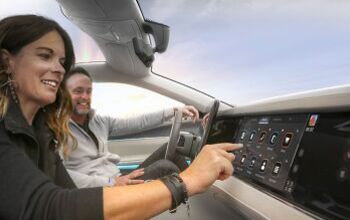
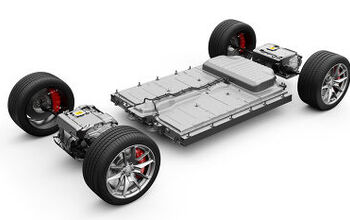
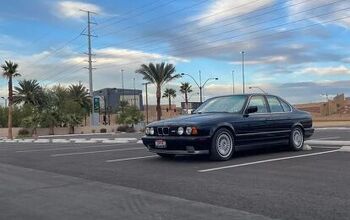


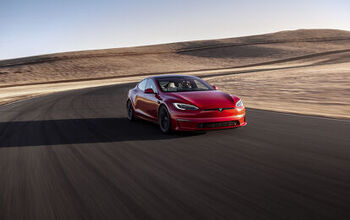

Comments
Join the conversation
Finally someone reviewed a long bed model, I know some think the long beds make midsize trucks look weird but on the Toyota especially the short bed has the axle tucked up under the cab so badly it looks like it hadn't been designed that way. I like the midsize trucks but think they only make sense in a mid-level trim, SLE, LT, SR5, XLT... Beyond that they get pricey so fast there is little reason to choose them unless you MUST have a smaller truck.
And all the while, the new Jeep Scrambler keeps creeping up... I wouldn't even think about something in the midsize category until we have some Scramblers in the wild to compare. It's pretty likely Chevy puts the 2.7l in the Colorado twins too. That would make the Toyota as it sits today a pretty tough sell. That's before you throw Ford into the mix.